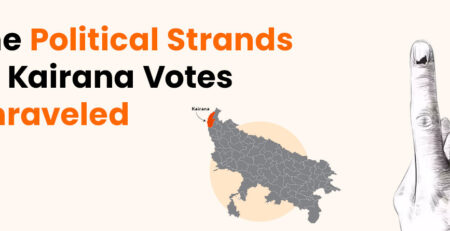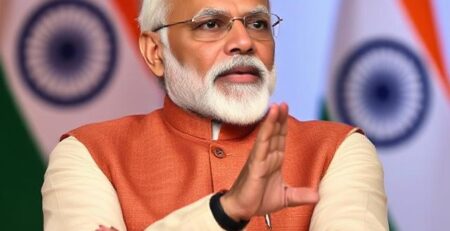The Stark Reality of India’s Wealth Inequality: Why Economic Development Must Accelerate to Bridge the Growing Divide
Introduction: The Uncomfortable Truth About India’s Economic Reality
India’s economic narrative presents a troubling paradox that demands immediate attention. While the nation celebrates its status as the world’s fastest-growing major economy, the underlying wealth distribution reveals a stark and uncomfortable truth. The richest 1% now own more than 40% of the country’s total wealth, while the bottom 50% hold just 3%. This extreme concentration of wealth places India among the most unequal societies globally, surpassing even traditionally unequal economies.
The reality is even more striking when examined through specific wealth thresholds. Having assets worth Rs. 8 crores places an individual in the country’s top 1%, while even possessing a single crore rupee puts someone among the top 3% of the population. These figures illuminate the vast chasm between India’s economic elites and the masses, highlighting fundamental structural issues that threaten long-term sustainable development.
The Scale of India’s Wealth Concentration Problem
Historical Context and Worsening Trends
Income Inequality: 22.6% of the national income went to the top 1% (World Inequality database, 2022-23). It is among the very highest in the world, higher than even the US. This concentration represents a significant departure from India’s post-independence economic structure and suggests that current growth patterns are fundamentally flawed in their distribution mechanisms.
The trajectory of wealth concentration has accelerated dramatically in recent decades. The middle 40%’s wealth share were between 40% to 45% between 1961 and 1981. After that, it fell to 31% in 2012, rose marginally to 32% in 2018 and lowered considerably to 29% in 2023. This steady erosion of middle-class wealth share indicates that India’s growth model has systematically favored the wealthy while marginalizing the middle and lower economic segments.
The Billionaire Boom Amid Mass Poverty
The concentration at the very top has reached unprecedented levels. The current total number of billionaires in India is peaking at 271, with 94 new billionaires added in 2023 alone, according to Hurun Research Institute’s 2024 global rich list published Tuesday. This represents more new billionaires than any country except the United States, highlighting how India’s growth has disproportionately benefited the ultra-wealthy.
This billionaire creation occurs against a backdrop where hundreds of millions struggle with basic necessities. The stark contrast between extreme wealth accumulation and persistent poverty underscores the urgent need for comprehensive economic reforms that prioritize inclusive growth over pure GDP expansion.
Manufacturing Sector: The Missing Engine of Equitable Growth
Current State and Structural Limitations
India’s manufacturing sector, despite various government initiatives, continues to underperform relative to its potential and compared to other developing economies. However, the sector accounted for just 14% of GDP for the fiscal year 2024-25 from over 15% when the scheme was launched. This decline in manufacturing’s share of GDP is particularly concerning given the sector’s crucial role in creating middle-skilled, well-paying jobs that historically drive broad-based prosperity.
The manufacturing sector’s stagnation represents a critical failure in India’s development strategy. Unlike services, which tend to be skill-intensive and create fewer jobs per unit of investment, manufacturing has the potential to absorb large numbers of workers while providing pathways for economic mobility. The sector’s inability to expand its GDP share indicates fundamental structural problems that government policies have failed to address effectively.
Employment Generation Challenges
We find that India needs to create between 143-324 million jobs by 2050 and that doing so and with workers shifting towards more dynamic sectors could boost GDP growth by 0.2-0.5 percentage points. This massive employment challenge cannot be met without a robust manufacturing sector capable of absorbing millions of workers entering the labor force annually.
The employment crisis extends beyond mere job creation. However, the manufacturing sector in India faces several challenges, including skilled labour shortages. This skills gap reflects broader failures in education and training systems that have not adapted to modern manufacturing requirements. Without addressing these fundamental human capital constraints, India cannot hope to develop the advanced manufacturing capabilities necessary for sustained high-growth rates.
The Women Empowerment Deficit: Half the Population Left Behind
Gender Pay Gap and Economic Participation
Economic inequality in India is compounded by severe gender disparities that effectively exclude half the population from meaningful economic participation. The report also reveals a gender pay gap, with female workers earning only 63 paise for every 1 rupee earned by male workers. This 37% pay gap represents one of the most significant barriers to reducing overall inequality and achieving sustainable economic growth.
The underutilization of women’s economic potential represents an enormous opportunity cost for the Indian economy. Countries that have successfully achieved high growth rates with equitable distribution have consistently emphasized women’s economic empowerment as a cornerstone of their development strategy. India’s failure to address gender-based economic exclusion fundamentally limits its growth potential.
Structural Barriers to Women’s Economic Participation
Women’s economic empowerment in India faces multiple structural barriers including limited access to education, cultural restrictions on mobility, inadequate childcare infrastructure, and discriminatory workplace practices. These barriers operate at systemic levels, requiring comprehensive policy interventions rather than piecemeal reforms.
The manufacturing sector, in particular, has struggled to create employment opportunities that are accessible to women. Traditional manufacturing roles have been designed around male participation patterns, with limited consideration for creating inclusive workplaces that accommodate women’s needs. This represents a massive untapped labor resource that could significantly contribute to both manufacturing growth and inequality reduction.
Skills Development: The Critical Missing Link
Education-Employment Mismatch
India’s education system continues to produce graduates who lack the skills required for modern economic participation. The disconnect between educational curricula and industry requirements has created a paradoxical situation where unemployment coexists with skill shortages. This mismatch is particularly pronounced in manufacturing, where technical skills, problem-solving abilities, and adaptability are essential.
The skills deficit extends beyond technical capabilities to include soft skills, digital literacy, and entrepreneurial thinking. As global manufacturing becomes increasingly sophisticated, India’s workforce must develop capabilities that enable participation in complex value chains rather than simple assembly operations.
Vocational Training and Industry Alignment
Traditional approaches to skills development have focused on theoretical knowledge rather than practical application. Successful manufacturing economies have developed robust vocational training systems that closely align with industry needs and provide clear pathways for career advancement. India’s current system lacks this integration, resulting in trained workers who cannot immediately contribute to productive employment.
The absence of industry-aligned skills development creates a vicious cycle where manufacturers struggle to find qualified workers, leading to low productivity and limited investment in expansion. This constrains the sector’s ability to generate the high-quality employment necessary for broad-based economic advancement.
Business Environment: Regulatory Complexity and Implementation Gaps
Ease of Doing Business Challenges
Despite government efforts to improve the business environment, India continues to face significant challenges in creating a truly business-friendly ecosystem. Regulatory complexity, bureaucratic delays, and implementation inconsistencies across states create substantial barriers to business expansion and investment.
The manufacturing sector is particularly affected by these challenges due to its capital-intensive nature and long project timelines. Uncertainty in regulatory processes increases investment risks and deters both domestic and foreign investors from committing to large-scale manufacturing operations.
Infrastructure and Logistics Constraints
India’s infrastructure limitations significantly impact manufacturing competitiveness. Poor transportation networks, unreliable power supply, and inadequate logistics systems increase operational costs and reduce productivity. These infrastructure deficits make Indian manufacturing less competitive compared to other developing economies with better physical infrastructure.
The infrastructure challenges are particularly acute in secondary cities and rural areas where manufacturing could potentially create employment opportunities for local populations. Without addressing these fundamental infrastructure constraints, manufacturing growth will remain concentrated in already-developed regions, exacerbating regional inequalities.
GDP Growth Rate Reality Check: Sustainable vs. Inclusive Growth
Current Growth Patterns and Their Limitations
India’s current GDP growth, while impressive by global standards, has proven insufficient to address the country’s massive development challenges. The growth has been primarily driven by services and consumption rather than productive sectors like manufacturing that create sustainable employment. This growth pattern, while generating headlines, has failed to translate into broad-based prosperity.
Real GDP growth rates of 6-7% annually, while respectable, fall short of the 8-10% sustained growth necessary to create sufficient employment opportunities and reduce inequality within a reasonable timeframe. The real GDP growth for FY 2025-26 is anticipated to grow between 6.3 and 6.8 percent. This projected growth rate, while positive, remains inadequate for addressing India’s massive employment and inequality challenges.
The Productivity Imperative
Achieving sustained high growth rates requires dramatic improvements in productivity across all sectors. This necessitates investments in technology, infrastructure, and human capital that have been inadequate in India’s current development trajectory. Without these productivity improvements, growth remains vulnerable to external shocks and fails to create the economic dynamism necessary for rapid poverty reduction.
The focus must shift from growth at any cost to growth that systematically addresses inequality while building sustainable economic capabilities. This requires a fundamental reorientation of economic policy priorities and implementation strategies.
The Employment Crisis: Quantity and Quality Challenges
Job Creation Shortfalls
India’s employment challenges extend far beyond simple job creation numbers. The economy must create millions of jobs annually just to accommodate new entrants to the labor force, while simultaneously providing opportunities for underemployed workers to transition to more productive employment. Current job creation rates fall significantly short of these requirements.
The quality of employment being created presents an equally serious challenge. Many new jobs are in the informal sector with low wages, no social protection, and limited opportunities for skill development or career advancement. This type of employment perpetuates rather than reduces inequality.
Sectoral Employment Imbalances
Agriculture continues to employ a disproportionate share of the workforce relative to its contribution to GDP, indicating massive underemployment in the sector. The transition of workers from agriculture to manufacturing and services has been slower than necessary for optimal economic development. This sectoral imbalance contributes to both low productivity and persistent rural poverty.
The services sector, while important for GDP growth, has limited capacity to absorb the millions of workers who need to transition out of agriculture. Manufacturing represents the natural destination for these workers, but the sector’s stagnant growth has created a bottleneck that constrains overall economic transformation.
International Comparisons: Learning from Success Stories
East Asian Development Models
Countries like South Korea, Taiwan, and China achieved rapid economic development by prioritizing manufacturing-led growth with strong emphasis on export competitiveness. These economies systematically developed their manufacturing capabilities while implementing policies to ensure that growth benefits were broadly shared across the population.
Their success demonstrates that sustained high growth rates of 8-10% are achievable when supported by appropriate policy frameworks and institutional capabilities. However, replicating their success requires fundamental changes in India’s approach to economic development.
Policy Lessons and Implementation Requirements
Successful development experiences emphasize the importance of coordinated policy implementation across multiple sectors. Education, infrastructure, industrial policy, and social programs must work together coherently to achieve transformational change. India’s current approach often involves disconnected initiatives that fail to create synergistic effects.
The emphasis must shift from individual program success to systemic transformation that addresses root causes of inequality and low productivity. This requires long-term commitment and political will that transcends electoral cycles.
The Innovation and Technology Gap
Research and Development Investments
India’s R&D spending remains significantly below levels achieved by countries that have successfully transitioned to high-income status. Innovation capabilities are essential for developing competitive manufacturing industries that can compete in global markets while providing high-quality employment.
The technology gap affects not only manufacturing competitiveness but also the quality of jobs created. Without technological advancement, employment remains concentrated in low-skill, low-wage activities that perpetuate inequality rather than reducing it.
Digital Divide and Economic Participation
The digital divide in India limits economic participation for significant portions of the population. As the economy becomes increasingly digitized, those without access to technology and digital skills face growing disadvantages in employment and entrepreneurship opportunities.
Bridging this digital divide is essential for ensuring that economic growth benefits reach all segments of society. This requires coordinated investments in digital infrastructure, education, and skills development that enable broad-based participation in the modern economy.
Financial Inclusion and Access to Capital
Credit Access and Entrepreneurship
Limited access to formal credit constrains entrepreneurship and small business development, which are crucial for creating employment and reducing inequality. The financial system’s bias toward large corporations and established businesses limits opportunities for innovative startups and small enterprises.
Financial inclusion initiatives have made progress but remain insufficient for addressing the scale of the challenge. Expanding access to capital for small and medium enterprises is essential for creating the employment opportunities necessary for reducing inequality.
Investment in Human Capital
Sustainable economic development requires massive investments in education, healthcare, and skills development. These investments in human capital are essential for ensuring that growth creates opportunities for advancement rather than perpetuating existing inequalities.
The returns on human capital investment are typically higher than physical capital investments in developing economies, making them essential for achieving high growth rates while reducing inequality.
Regional Disparities and Development Imbalances
Urban-Rural Divide
India’s development has been heavily skewed toward urban centers, creating massive regional disparities that contribute to overall inequality. Rural areas continue to lag in infrastructure, employment opportunities, and access to services, perpetuating poverty and limiting economic mobility.
Addressing regional disparities requires targeted investments in rural infrastructure and the development of manufacturing capabilities in secondary cities. This geographic distribution of economic opportunities is essential for reducing migration pressures on major cities while creating inclusive growth.
State-Level Variations
Significant variations in development outcomes across states indicate that policy implementation and governance quality matter enormously for development success. States with better governance and policy implementation have achieved better outcomes in reducing inequality and creating employment.
Policy Recommendations for Transformational Change
Manufacturing Renaissance Strategy
India needs a comprehensive manufacturing renaissance that goes beyond current initiatives like Make in India. This requires addressing fundamental constraints including infrastructure, skills, regulation, and financing. The strategy must prioritize sectors with high employment potential while building technological capabilities for future competitiveness.
Integrated Human Development Approach
Education, healthcare, and skills development must be treated as integrated components of economic development rather than separate policy areas. This integration is essential for ensuring that growth creates opportunities for advancement across all segments of society.
Women’s Economic Empowerment Initiative
Systematic efforts to enhance women’s economic participation through policy reforms, infrastructure development, and cultural change initiatives are essential for achieving sustained high growth rates while reducing inequality.
The Path Forward: Realistic Expectations and Urgent Reforms
Timeline for Meaningful Change
Reducing India’s extreme inequality while achieving high growth rates requires sustained effort over decades rather than years. The expectation that current policies will quickly transform India’s economic structure is unrealistic given the scale of the challenges involved.
However, the urgency of these challenges cannot be overstated. Rich are getting richer at a much faster pace while the poor are still struggling to earn a minimum wage. Without immediate and comprehensive action, inequality will continue to worsen, potentially undermining social cohesion and political stability.
Institutional Capacity Building
Achieving transformational change requires building institutional capabilities that currently do not exist at the scale required. This includes developing implementation capacity, monitoring systems, and coordination mechanisms that enable effective policy execution.
The focus must shift from policy announcements to implementation effectiveness. Many of India’s development challenges stem not from lack of policies but from inadequate implementation capacity and coordination across different levels of government.
Economic Growth Strategy: Beyond GDP Numbers
Quality vs. Quantity of Growth
India’s obsession with GDP growth rates has often overlooked the quality and distribution of that growth. Sustainable development requires growth that creates employment, reduces inequality, and builds productive capabilities rather than simply increasing output numbers.
The emphasis must shift toward productivity-driven growth that enhances the economy’s capacity to create high-quality employment while competing effectively in global markets. This requires investments in technology, infrastructure, and human capital that may temporarily reduce growth rates but build foundations for sustained long-term prosperity.
Sectoral Balance and Integration
Achieving balanced economic development requires careful attention to sectoral integration and complementarity. Manufacturing, services, and agriculture must develop in ways that support each other rather than competing for resources and policy attention.
The current development pattern, heavily skewed toward services, creates imbalances that limit overall economic potential. Rebalancing toward manufacturing while maintaining service sector competitiveness is essential for creating the employment opportunities necessary for inclusive growth.
International Investment and Technology Transfer
Foreign Direct Investment Strategy
India’s approach to foreign direct investment must balance the need for capital and technology with the requirement to build domestic capabilities. Current FDI patterns often involve assembly operations that create limited value addition and employment.
The focus should shift toward FDI that brings advanced technologies, develops local supply chains, and creates high-quality employment. This requires selective policies that attract investment aligned with long-term development objectives rather than short-term capital inflows.
Technology Transfer and Absorption
Successful development requires not just technology transfer but technology absorption capabilities that enable domestic innovation and upgrading. India’s current approach often involves importing technology without developing the capabilities to improve and adapt it for local conditions.
Building technology absorption capabilities requires coordinated investments in research and development, technical education, and industry-academia collaboration. These investments are essential for moving beyond low-value manufacturing toward higher-value activities that can support better wages and working conditions.
Social Infrastructure and Inclusive Development
Healthcare and Education Investments
Reducing inequality requires massive investments in social infrastructure that enable all citizens to participate effectively in economic development. Healthcare and education investments have particularly high returns in terms of both economic growth and inequality reduction.
Current levels of public investment in these areas remain inadequate for addressing the scale of the challenge. Achieving universal access to quality healthcare and education requires sustained increases in public spending along with improvements in service delivery efficiency.
Social Protection Systems
Comprehensive social protection systems are essential for managing the risks associated with economic transformation while ensuring that growth benefits reach all segments of society. Current social protection systems in India remain fragmented and inadequate for addressing the needs of a transforming economy.
Developing robust social protection requires not only increased funding but also improved delivery systems that can reach intended beneficiaries effectively. This includes digital systems, financial inclusion initiatives, and local capacity building.
Environmental Sustainability and Development Trade-offs
Green Manufacturing Transition
India’s manufacturing development must incorporate environmental sustainability from the outset rather than treating it as an afterthought. This requires investments in clean technologies and production processes that may initially increase costs but provide long-term competitiveness advantages.
The transition to green manufacturing presents opportunities for innovation and technological leadership while addressing environmental challenges. However, this transition requires support systems that help manufacturers adopt clean technologies without compromising competitiveness.
Resource Efficiency and Productivity
Environmental sustainability and economic development can be mutually reinforcing when approached through resource efficiency and productivity improvements. Manufacturing processes that minimize waste and energy consumption typically achieve higher productivity while reducing environmental impact.
Developing these capabilities requires technical expertise, financing mechanisms, and regulatory frameworks that incentivize efficiency improvements. These investments are essential for ensuring that manufacturing growth is sustainable over the long term.
Conclusion: The Imperative for Comprehensive Reform
India’s extreme wealth inequality reflects fundamental structural problems that cannot be addressed through incremental policy adjustments. The concentration of wealth at the top, stagnant manufacturing sector, persistent employment challenges, and inadequate human capital development create a self-reinforcing cycle that perpetuates inequality while limiting growth potential.
Breaking this cycle requires acknowledging uncomfortable realities about current development patterns and implementing comprehensive reforms that prioritize inclusive growth over pure GDP expansion. This includes developing advanced manufacturing capabilities, investing massively in human capital, empowering women economically, and creating business environments that facilitate productive investment.
The timeline for meaningful change spans decades rather than years, requiring sustained political commitment and social consensus around development priorities. However, the urgency of action cannot be overstated. Continuing current patterns will only worsen inequality while failing to achieve the growth rates necessary for addressing India’s massive development challenges.
Success requires tempering expectations about quick fixes while maintaining urgency about implementing comprehensive reforms. India’s economic future depends on making difficult choices about resource allocation and development priorities that prioritize long-term transformation over short-term political gains.
The path forward demands recognition that economic development is not merely about achieving high GDP growth rates but about creating economic structures that enable all citizens to participate meaningfully in prosperity. Without this fundamental reorientation, India’s development trajectory will continue to disappoint those who hope for genuine transformation rather than mere statistical progress.
The stakes could not be higher. India’s ability to provide dignified employment and reasonable prosperity for its enormous population will determine not only domestic stability but also its position in the global economy. The time for incremental change has passed; transformational action is now imperative for achieving the inclusive prosperity that India’s citizens deserve.












